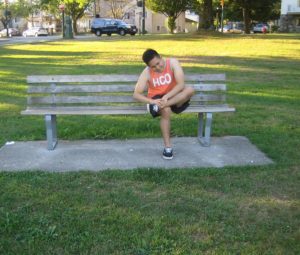Calf cramps can trigger intense pain and forces one to stop swimming. Since it arises abruptly and can be debilitating, it is considered dangerous especially if swimming far from the shore or in deep water.
It could even result to drowning if the individual is an unskilled swimmer. If calf cramps occur while swimming, there is something inappropriate and the individual should comply with the needs of the body to effectively lessen the cramping.

Proper hydration and electrolytes
Poor nutrition and hydration are the usual culprits for calf cramps that occurs while swimming. Even though it might seem unnecessary to hydrate while in the water, the body is perspiring while swimming and losing fluids. It is vital to properly hydrate before, during and after swimming to lessen the calf cramps.
Calf cramps might also indicate an imbalance in the electrolytes specifically potassium, magnesium and calcium. An electrolyte replacement beverage should be taken during exercise or include foods that are packed with these nutrients such as bananas, green leafy vegetables and dairy products.
Can deconditioning cause calf cramps?
Deconditioning or becoming unfit is a common reason for calf cramps particularly while swimming. Weakened muscles that have poor endurance could not adequately respond to an abrupt increase in physical activity. This result to microtears in the calf muscle and diminished oxygen that results to cramps.
It is recommended to take time in building up the length and intensity of the swimming routine. Add weight training and other aerobic activities to the routine to improve overall conditioning and physical fitness as well as lessen the cramping.
Correct ankle positioning
Most cases of calf cramps occur when swimming at high speeds. This occurs since the plantar flexes the ankles to get the most water resistance and power. On the other hand, this position is considered unnatural and can result to tightness, tension and cramping of the calf.
It is best to slow down and pay close attention to the movement of the ankles. They should be more relaxed and move in a normal way rather than holding them in a tight position.
